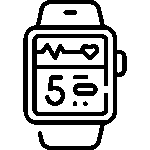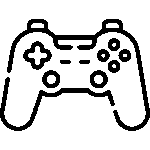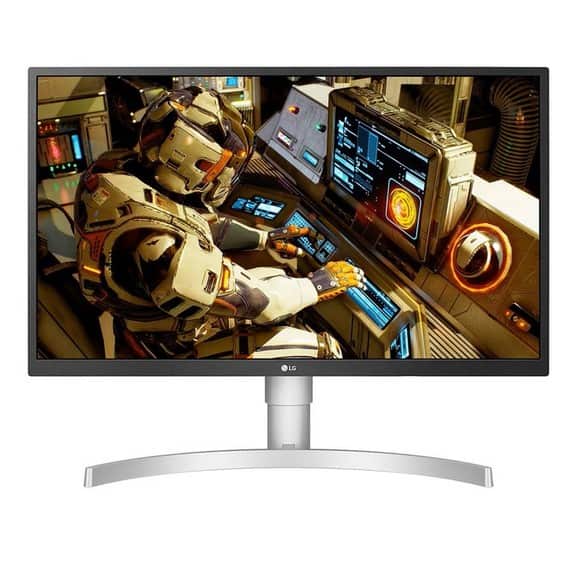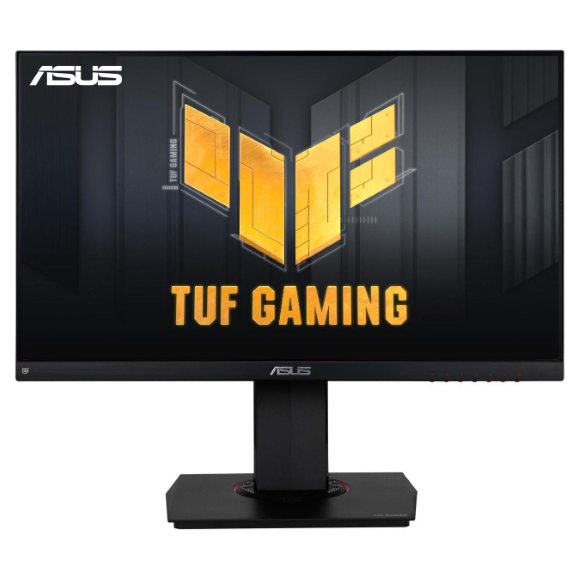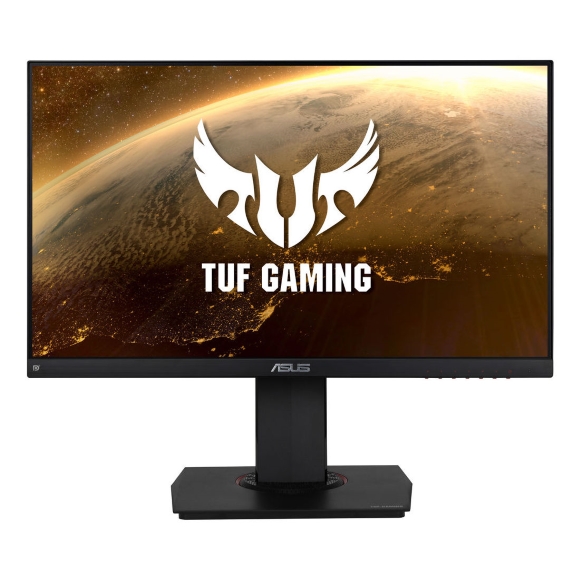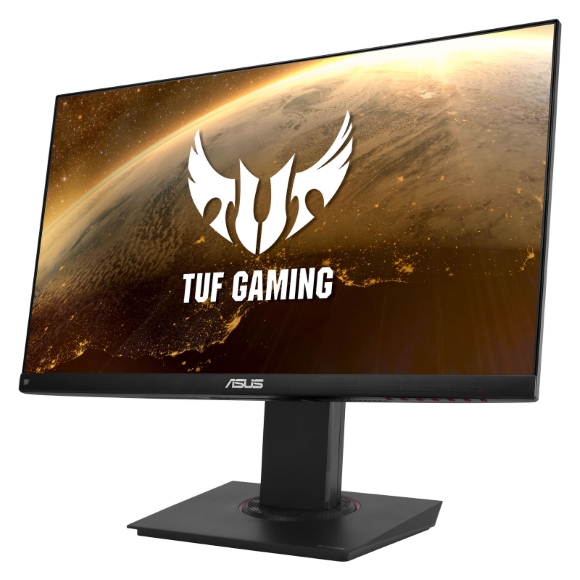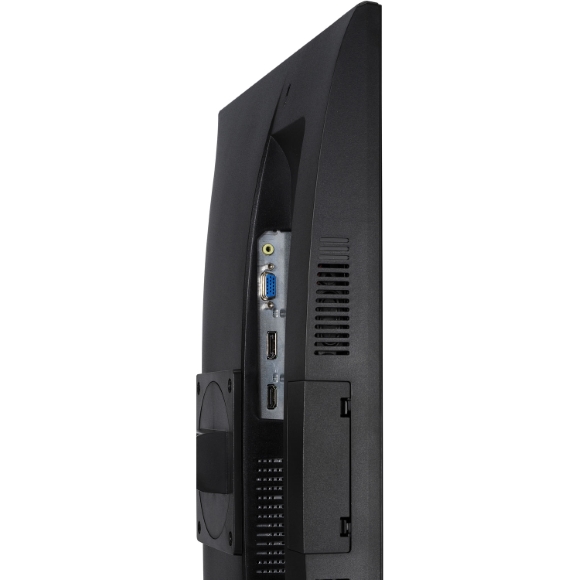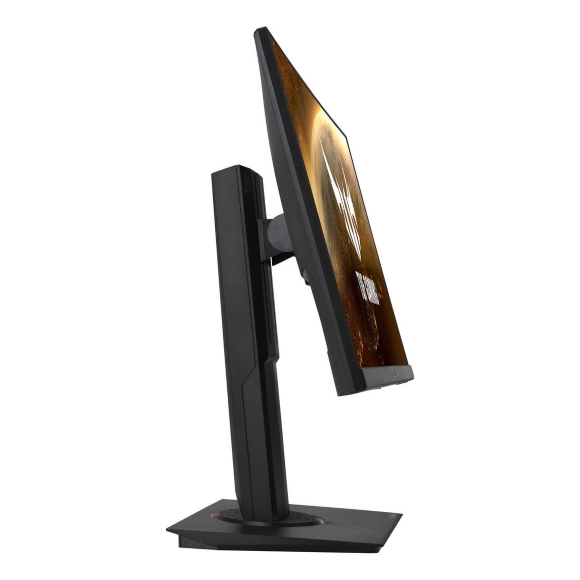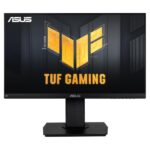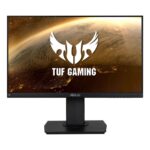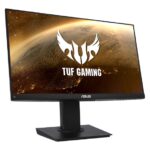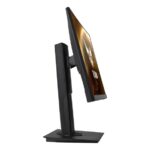ASUS TUF VG249Q 23.8″ 16:9 1ms 144 Hz IPS Gaming Monitor Price in Pakistan
| Brand
Name of the company-manufacturer. |
Asus |
| Series
Name of the series, which the model belongs to. |
TUF Gaming |
| Model
Designation of the model. |
TUF Gaming VG249Q |
| Model year
The year in which this model was announced. |
2019 |
Display
Information about the main characteristics of the display – panel, backlight, resolution, refresh rate, etc.
| Size class
Size class of the display as declared by the manufacturer. Often this is the rounded value of the actual size of the diagonal in inches. |
23.8 in (inches) |
| Diagonal
Approximate diagonal size of the display. If the manufacturer does not provide such information, the diagonal is calculated from the width and height of the screen. |
604.7 mm (millimeters) 60.47 cm (centimeters) 23.8071 in (inches) 1.9839 ft (feet) |
| Width
Approximate width of the display. If the manufacturer does not provide such information, the width is calculated from the diagonal and the aspect ratio. |
527.04 mm (millimeters) 52.704 cm (centimeters) 20.7496 in (inches) 1.7291 ft (feet) |
| Height
Approximate height of the display. If the manufacturer does not provide such information, the height is calculated from the diagonal and the aspect ratio. |
296.46 mm (millimeters) 29.646 cm (centimeters) 11.6717 in (inches) 0.9726 ft (feet) |
| Panel manufacturer
Name of the manufacturer of the display panel. |
Panda |
| Panel model
Information about the model of the panel used. |
LC238LF1F |
| Panel type
There are various panel technologies. Each has its own specific features – viewing angles, color reproduction, response time, brightness/contrast, production cost, etc. The image quality depends directly on the type of the display panel used. |
IPS |
| Panel bit depth
The most widely used panels are those with 6, 8, and 10 bits for each of the RGB components of the pixel. They provide 18-, 24-, and 30-bit color, respectively. |
8 bits (6 bits + FRC) |
| FRC
Frame Rate Control (FRC) is a method, which allows the pixels to show more color tones. With quick cyclic switching between different color tones, an illusion for a new intermediate color tone is created. For example, by using FRC, a 6-bit display panel is able to show 16.7 millioin colors, which are typical for 8-bit display panels, and not the standard 262200 colors, instead. There are different FRC algorithms. |
Yes |
| Colors
The maximum number of colors, which the display is able to reproduce, depends on the type of the panel in use and color enhancing technologies like FRC. |
16777216 colors 24 bits |
| Aspect ratio
The ratio between the horizontal and the vertical side of the display. Some of the standard and widely used aspect ratios are 4:3, 5:4, 16:9 and 16:10. |
1.778:1 16:9 |
| Resolution
Information about the number of pixels on the horizontal and vertical side of the screen. A higher resolution allows the display of a more detailed and of higher quality image. |
1920 x 1080 pixels Full HD / 1080p |
| Pixel pitch
The pixel pitch shows the distance from the centers of two neighboring pixels. In displays, which have a native resolution (the TFT ones, for example), the pixel pitch depends on the resolution and the size of the screen. |
0.275 mm (millimeters) 0.0275 cm (centimeters) 0.0108 in (inches) 0.0009 ft (feet) |
| Pixel density
Information of the number of pixels in a unit of length. With the decrease of the display size and the increase of its resolution, the pixel density increases. |
92 ppi (pixels per inch) 36 ppcm (pixels per centimeter) |
| Display area
The percentage of the approximate area, taken by the active part of the screen, to the total front area. |
88.88 % (percent) |
| Backlight
The backlight is the source of light of the LCD display panels. The type of backlight determines the image quality and the color space of the display. There are various backlights such as CCFL, LED, WLED, RGB-LED, and etc. |
W-LED |
| NTSC (1953)
The NTSC (1953) color space is introduced in 1953 by the FCC with the appearance of color television and has a wider gamut than the sRGB. |
72 % (percent) |
| Brightness
Information about the brightness of the screen. It is measured in candela per square metre (cd/m²). |
250 cd/m² (candela per square meter) |
| Static contrast
The static contrast shows the ratio between the brightest and the darkest color, which the display can reproduce simultaneously, for example, within one and the same frame/scene. |
1000 : 1 |
| Horizontal viewing angle
Information about the maximum horizontal viewing angle, within which the image on the screen is of acceptable quality. |
178 ° (degrees) |
| Vertical viewing angle
Information about the maximum vertical viewing angle, within which the image on the screen is of acceptable quality. |
178 ° (degrees) |
| Minimum response time
Information about the minimum amount of time, in which the pixels change from one color to another. Very often the manufacturer provides the response time for transition from grey-to-grey (G2G). |
4 ms (milliseconds) 0.0040 s (seconds) |
| Coating
Information about the type of coating of the display. There are different types of matte and glossy coatings, each of which has its own advantages and drawbacks. |
Anti-glare/Matte |
| Response time – 1 ms (MPRT – Motion Picture Response Time) |
3D
3D displays use various technologies to achieve a 3D effect. Each of these technologies has its own advantages and drawbacks.
| 3D
Information on whether 3D is supported or not. |
No |
Frequencies
Information about the horizontal and vertical refresh rates/frequencies.
| Horizontal frequency (analog)
The horizontal scan rate/frequency shows the number of horizontal lines, displayed by the monitor per second, when it is plugged to an analog source. In CRT displays the horizontal scan rate is the frequency, at which the CRT moves the electron beam from the left to the right of the display in a cycling manner, thus specifying the number of horizontal lines displayed per second. |
30 kHz – 84 kHz (kilohertz) |
| Horizontal frequency (digital)
The horizontal scan rate/frequency shows the number of horizontal lines, displayed by the monitor per second, when it is plugged to a digital source. |
30 kHz – 180 kHz (kilohertz) |
| Vertical frequency (analog)
The vertical frequency is also called refresh rate and shows how many times in a second the image on the screen is refreshed. |
48 Hz – 75 Hz (hertz) |
| Vertical frequency (digital)
The vertical frequency/refresh rate shows how many times in a second the image on the screen is refreshed. |
48 Hz – 144 Hz (hertz) |
Power supply and consumption
Information about the power supply and consumption, energy efficiency class, etc.
| 110V
Permissible voltage tolerance in a 110-volt electric system. |
100 V – 120 V (volts) |
| 220V
Permissible voltage tolerance in a 220-volt electric system. |
220 V – 240 V (volts) |
| Alternating current frequency
Requirement regarding the alternating current frequency in the electric system. |
50 Hz – 60 Hz (hertz) |
| Power consumption (off)
Power consumption in off-mode. |
0.5 W (watts) |
| Power consumption (sleep)
Power consumption in sleep/stand by/suspend mode. |
0.5 W (watts) |
| Power consumption (average)
Average power consumption in standard work mode. |
16 W (watts) |
Dimensions, weight and color
Information about the dimensions and the weight of the specific model with and without stand as well as the colors, in which it is offered to the market.
| Width
Width without stand in different measurement units. |
540.5 mm (millimeters) 54.05 cm (centimeters) 21.2795 in (inches) 1.7733 ft (feet) |
| Height
Height without stand in different measurement units. |
325.24 mm (millimeters) 32.524 cm (centimeters) 12.8047 in (inches) 1.0671 ft (feet) |
| Depth
Depth without stand in different measurement units. |
51.67 mm (millimeters) 5.167 cm (centimeters) 2.0343 in (inches) 0.1695 ft (feet) |
| Width with stand
Width with stand in different measurement units. |
540.5 mm (millimeters) 54.05 cm (centimeters) 21.2795 in (inches) 1.7733 ft (feet) |
| Height with stand
Height with stand in different measurement units. |
365 mm (millimeters) 36.5 cm (centimeters) 14.3701 in (inches) 1.1975 ft (feet) |
| Depth with stand
Depth with stand in different measurement units. |
217.6 mm (millimeters) 21.76 cm (centimeters) 8.5669 in (inches) 0.7139 ft (feet) |
| Weight with stand
Weight with stand in different measurement units. |
6.07 kg (kilograms) 13.38 lbs (pounds) |
| Box width
Width of the package in different measurement units. |
723 mm (millimeters) 72.3 cm (centimeters) 28.4646 in (inches) 2.372 ft (feet) |
| Box height
Height of the package in different measurement units. |
400 mm (millimeters) 40 cm (centimeters) 15.748 in (inches) 1.3123 ft (feet) |
| Box depth
Depth of the package in different measurement units. |
200 mm (millimeters) 20 cm (centimeters) 7.874 in (inches) 0.6562 ft (feet) |
| Box weight
Weight of the product with all accessories and packaging in different measurement units. |
9 kg (kilograms) 19.84 lbs (pounds) |
| Colors
Information about the colors, in which the specific model is offered to the market. |
Black |
Ergonomics
Information about the ergonomic functions – height adjustment, swivel angles, tilt angles, etc.
| VESA mount
Information about whether there is a possibility for wall mounting according to the VESA Mounting Interface Standard (MIS). |
Yes |
| VESA interface
There are many various interfaces under the VESA standard, which differ in the size of the brackets, the distances between the screw holes and their number. |
100 x 100 mm |
| Removable stand
Information about whether the stand can be dismounted. Usually, this is required for wall mounting. |
Yes |
| Height adjustment
Information about whether the stand allows height adjustment. |
Yes |
| Height adjustment range
Information about the extent to which the stand allows the height to be adjusted. |
150 mm (millimeters) 15 cm (centimeters) 5.9055 in (inches) 0.4921 ft (feet) |
| Landscape/portrait pivot
Some displays have the ability to operate in landscape and portrait mode alike. |
Yes |
| Left pivot
Degree of pivoting the display counterclockwise. |
90 ° (degrees) |
| Right pivot
Degree of pivoting the display clockwise. |
90 ° (degrees) |
| Left/right swivel
Information whether the display can be swiveled around the stand axis. |
Yes |
| Left swivel
Maximum swivel degree of the display to the left of the stand axis. |
62 ° (degrees) |
| Right swivel
Maximum swivel degree of the display to the right of the stand axis. |
62 ° (degrees) |
| Forward/backward tilt
Most displays have the ability to be tilted forward and backward as to provide a more comfortable viewing position for the user. |
Yes |
| Forward tilt
Maximum degree of forward tilting of the display. |
5 ° (degrees) |
| Backward tilt
Maximum degree of backward tilting of the display. |
20 ° (degrees) |
Audio
Information about the audio system – number and power of the built-in speakers, supported audio technologies.
| Speakers
The speaker is a device, which converts electrical audio signals into acoustic vibrations resulting in corresponding sounds. |
2 x 2 W (watts) |
Camera
Many contemporary desktop monitors and smart TV sets have built-in cameras.
| Camera
Information whether the current model has a built-in camera or not. |
No |
Connectivity
Available connectivity ports, slots and interfaces.
| Connectivity
Information about the available connectivity ports, slots and interfaces such as USB, infrared port, SD card slot, audio/video and network interfaces, etc. |
1 x HDMI 1.4 1 x DisplayPort 1.2 1 x D-sub 1 x 3.5 mm Audio In |
| High-bandwidth Digital Content Protection (HDCP) |
Features
Some additional functional features of the model.
| Features
Information about additional software features, technologies, functions and services of the model. |
AMD FreeSync technology Adaptive-Sync technology ELMB (Extreme Low Motion Blur) Flicker-free technology GamePlus (Crosshair/Timer/FPS Counter/Display Alignment) GameFast Input technology GameVisual Low Blue Light Shadow Boost |
Certificates, standards and licenses
Licenses from regulatory agencies, standards, certificates.
| Certificates, standards and licenses
List of the standards, certificates and licenses supported/received by the current model. |
TUV Flicker-free TUV Low Blue Light |
Operating and storage conditions
There are certain requirements for the environmental conditions, in which the display should be used and stored in order to function properly.
| Operating temperature
The operating temperature shows the safe temperature range (from minimum to maximum), within which the display will function flawlessly. Outside this range it might operate improperly and/or fail entirely. |
0 °C – 40 °C (degrees Celsius) 32 °F – 104 °F (degrees Fahrenheit) |
| Storage temperature
The storage temperature shows the range from a minimum to a maximum temperature, within which storing of the display is considered to be safe. |
-20 °C – 60 °C (degrees Celsius) -4 °F – 140 °F (degrees Fahrenheit) |
Accessories
Often the packaging of desktop monitors and smart TV sets includes accessories for them.
| Accessories
Information about some of the main accessories included in the standard packaging of the current model. |
DisplayPort cable – optional HDMI cable – optional D-sub cable – optional Audio cable – optional |

 Action Cameras
Action Cameras Video Camera
Video Camera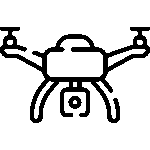 Drones
Drones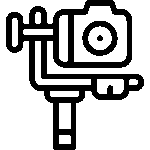 Gimbals
Gimbals Microphone
Microphone DRLR & Mirrorless
DRLR & Mirrorless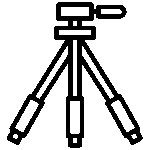 Tripods
Tripods
 All In One
All In One Desktop Computers
Desktop Computers Mac Mini
Mac Mini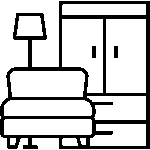

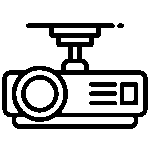 Projectors
Projectors

 Tablets
Tablets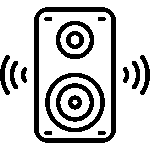 Speakers
Speakers
